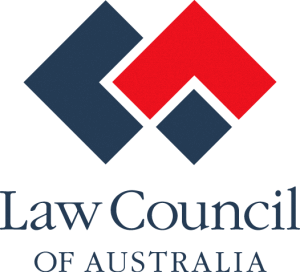- TAX LAWYERS, TAX ADVISORY, TAX COMPLIANCE, EXPATS - SYDNEY, BRISBANE, MELBOURNE, CANBERRA
- 1300 334 518
- admin@waterhouselawyers.com.au
What happens to a tax debt during an objection or appeal?
Tax Debt
What happens to a tax debt during an objection or appeal?
Disputing Tax Debt: Understanding Your Options

If you’ve been audited by the ATO or received an estimate of tax, then you may not agree with the new amount the ATO says you owe.
You have options for disputing these debts. Usually, the first step is to object to the ATO’s decision about the debt. If the objection isn’t decided in your favour, you can take the matter to the AAT or Federal Court. You can also seek in-house facilitation with the ATO.
But taking one of these steps does not put the debt on hold.
Whilst the dispute process is happening, the debt still stands. This means the ATO can pursue it through legal channels if it is not paid. This can include steps towards bankruptcy (for individuals) and steps towards winding up (for a company).
ATO’s Policies and High-Risk Assessments for Disputed Tax Debt
Generally, the ATO will only take debt recovery steps in cases that it assesses as ‘high risk’. There are many factors the ATO looks at in assessing the risk profile of a case:
- The merits of the dispute. If it appears frivolous and the ATO considers you have no chance of succeeding, it is more likely to start legal proceedings. This is because it may consider that you are ‘buying time’ to rearrange financial affairs to make it harder to collect the debt.
- Whether any amounts not in dispute have been paid. If they haven’t, this may indicate an unwillingness or inability to pay.
- Whether you appear to be disposing of assets or moving funds offshore.
According to a report of the Auditor-General released in mid-2019, if the ATO assesses a dispute as ‘genuine’ and considers there is a lower non-payment risk, the policy is to not pursue the debt until the dispute is resolved. According to that report, the ATO was not taking any debt recovery action on 94.1% of its disputed debts (as at 31 October 2018).
General Interest Charge: Implications for Disputed Tax Debts
Regardless of whether or not the ATO has put debt recovery action on hold, the general interest charge is still charged on your tax debt. The means the debt is growing every day, at an interest rate that is close to double a standard mortgage rate.
You can minimise your exposure to the general interest charge by entering into a 50/50 arrangement.
The 50/50 Arrangement: How It Works
If a case is not too high risk, the ATO may allow a 50/50 arrangement. This is an agreement that you and the ATO each do certain things concerning the disputed tax debt.
Requesting a 50/50 Arrangement: Factors to Consider
Your obligations</span style>
Under a 50/50 arrangement you are required to do three things:
- Pay at least 50% of the disputed primary tax (this doesn’t include disputed penalties or general interest charge)
- Pay all outstanding undisputed tax debts
- agree to provide any information that is needed to resolve the dispute in a timely fashion
The ATO’s obligations</span style>
In return for the above, the ATO will do two things:
- Defer any debt recovery action until after the objection is decided, or after the Tribunal or Court have made a decision (as applicable);
- Remit 50% of the general interest charge that accrues between the time of the above payment and the outcome of the dispute.
Usually, a 50/50 arrangement that is entered into after an objection has been lodged will be extended if there is a subsequent AAT or Federal Court appeal.
Triggering a 50/50 Arrangement
A 50/50 arrangement can be requested by you or by the ATO.
The ATO is unlikely to push for a 50/50 arrangement if it considers your dispute to be genuine and that there is a lower non-payment risk. Instead, the ATO may be happy to defer debt collection until the matter is resolved.
You may want to request a 50/50 arrangement as a way to reduce the potential impact of the general interest charge. There are a lot of factors to consider in deciding whether to ask for a 50/50 arrangement. For example:
- Do you have the funds to pay the tax debt?
- How confident are you that you are right and the tax debt will be reduced?
- If things don’t go your way, do you have grounds to justify a remission of the general interest charge via the usual remission process?
Consequences of Not Entering into a 50/50 Arrangement
Not entering into a 50/50 arrangement means that there will be no automatic remission of 50% of the general interest charge. As mentioned above, this may not concern you if you’re confident that you’ll win or will be able to have the general interest charge remitted anyway.
But what if the ATO considers your case to be high risk, and you are unable or unwilling to enter into a 50/50 arrangement at the ATO’s request? In that case, the ATO may pursue the debt using its usual process (i.e. bankruptcy, winding up, garnishee notices, etc). The specific action it takes will always depend on the particular case.
Expert Guidance: Managing Your Disputed Tax Debt
If you’re disputing a tax debt, then hopefully you have a tax expert helping you.
They should be able to advise you on how to deal with the debt in the meantime, based on the specifics of your dispute and situation.
Credentials
Recognition




